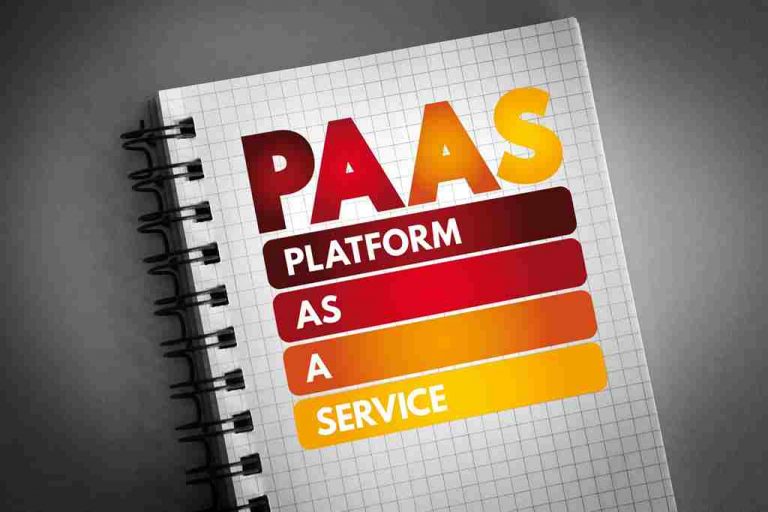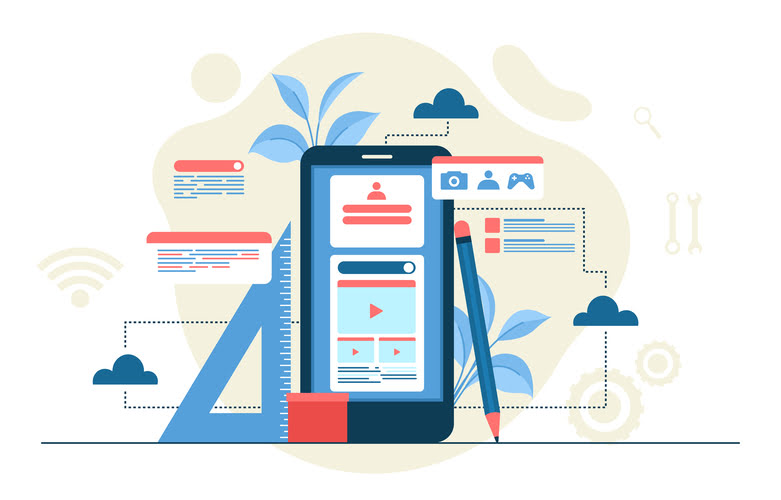Содержание
With this practice, every change that passes all stages of your production pipeline is released to your customers. There’s no human intervention, and only a failed test will prevent a new change to be deployed to production. It doesn’t require short release iterations and simply allows the commitment of new pieces of code when they are ready. This way, developers can update the product multiple times per day, continuously delivering the value to users. This is achieved by a high level of testing and deployment automation.
The “CD” in CI/CD can refer to continuous deployment or continuous delivery, which describe ways to automate further stages of the pipeline. Benefits of adopting Continuous Delivery on Healthcare apps can be significant. This means facing an improvement in time to market, a reduction in cycle time and an improvement in productivity. Managing a business model like this, allows organizations to have a quicker customers response. It will always depend on your business size, but I’ll say the larger your Healthcare business is, the more important it is for you to apply this model on your sector industry. Continuous Delivery is a set of tools that integrate all test cases in an automated fashion and simulate the testing environment on the go for every bug addressed in any component under consideration.
- Norms and challenges of Data protection for the healthcare industry have been changing over the years.
- Without CD, developers manually develop, test, and deploy code.
- As a result, they can reduce the cost, time, and risk of delivering each change.
- Your documentation process will need to keep up with the pace of deployments.
- Each company needs to identify the right combination of unit, functional, and stress tests that comprise its testing suite.
Integration generally took weeks or months and could be very painful. Continuous integration is a practice that puts the integration phase earlier in the development cycle so that building, testing and integrating code happens on a more regular basis. Developers practicing continuous integration merge their changes back to the main branch as often as possible.
Automated tests are tests that are coded and automatically run once code is checked into the common source repositories. The word ‘DevOps’ comes from the combination of the words ‘development’ and ‘operations’. DevOps is a culture that promotes collaboration between developers (hey Steve and Annie, you’re back) and other technology professionals, often called operations or just ops (high-five ops star Joey!). Specifically, communication and collaboration during the software delivery and deployment process, with the goal of releasing better quality software more quickly and more reliably. The primary principle of continuous delivery is to deliver working software incrementally in shorter iterations. In other words, continuous delivery is the implementation of a short cycle where code is frequently develop, build, checked in, tests are automated, and deployments are frequent.
Your team will need to write automated tests for each new feature, improvement or bug fix. Continuous integration puts a great emphasis on testing automation to check that the application is not broken whenever new commits are integrated into the main branch. Another commonly used open source project is Tekton, part of the Continuous Delivery Foundation. Tekton provides the ability to describe delivery pipelines declaratively using Kubernetes concepts and execute them on-demand in containers. A CI/CD pipeline is a series of steps performed in order to deliver a new version of software.
How To Secure Continuous Delivery?
Automation helps maintain quality while reducing human error. Automation can also support security as part of a DevSecOps strategy. The primary goal of continuous delivery is to make software deployments painless, low-risk events that can be performed at any time, on demand. By applying patterns such asblue-green deployments it is relatively straightforward to achieve zero-downtime deployments that are undetectable to users.

The application of DevOps practices over healthcare infrastructure can greatly simplify and speed up all kinds of digital compliance needs and impact cost parameters cash positively. CD brings fundamental changes to organizations because old scheduling and development cycles disappear. As you move to CD, you need to bring your entire organization—not just your development and operations teams—along in order to reap every advantage.
What Are The Best Continuous Delivery Tools?
A continuous deployment pipeline is an automated workflow that brings together builds, tests, and deployments to push code changes to production. Each step in the workflow produces an output that provides an input for the next step. Automated testing and monitoring take place throughout a continuous deployment pipeline to catch any potential errors, functional problems, and bugs. This provides real-time alerts and prevents any potential issues from making it into the main software branch, or into production. Continuous Delivery means that each time Steve or Annie makes changes to the code, integrates and builds the code, that they also automatically test this code on environments that are very similar to production. We call this progression of deploying to – and testing on – different environments a deployment pipeline.
It’s not that complicated, we have pictures and everything. Automated debugging tools can pinpoint issues in seconds and help speed resolution. Automated monitoring tools can send real-time alerts when specific conditions occur. Testing often misses regressions and other issues until software is in production. Automation testing mitigates risks by testing every new iteration of your code, instead of testing once a day, or once a week. That limits the damage that can be done if something breaks.
In contrast, continuous deployment automates the entire process including the release of the software itself. If code changes are successfully merged and pass all predefined, automated tests, it is immediately shipped to customers. Continuous deliveryis an extension of continuous integration since it automatically deploys all code changes to a testing and/or production environment after the build stage. It’s not uncommon for the integration and test/fix phase of the traditional phased software delivery lifecycle to consume weeks or even months. We also avoid the large amounts of re-work that plague the phased approach.
Orchestrating Your Php Applications
But CD can either mean continuous delivery or continuous deployment. In a continuous deployment software release strategy, any code commit that passes the automated testing phase is released automatically into the production environment. Automation replaces many manual steps and prompts dramatic changes in software delivery and operations. Continuous deployment builds upon continuous integration—and it’s at this stage that CI stops, and CD begins. After a new piece of code is committed and integrated into the codebase, this triggers the automated verification process that runs a series of tests on a release candidate build. This can include functional, integration, security, and production-level testing to ensure a release candidate will work following deployment.
This means we can get feedback from users throughout the delivery lifecycle based on working software. Techniques such as A/B testing enable us to take ahypothesis-driven approach to product development whereby we can test ideas with users before building out whole features. This means we can avoid the 2/3 of features we build that deliver zero or negative value to our businesses. A healthcare company requires a high-performance and well-functioning infrastructure, and this can only be achieved by a https://globalcloudteam.com/, which involves all the development practices.
Cloud-native app protection platforms: Best practices – SC Media
Cloud-native app protection platforms: Best practices.
Posted: Fri, 23 Sep 2022 17:49:05 GMT [source]
Because of CD’s expedited release cycle, a trainer may have to learn new features more quickly, or a sales manager may have challenges setting up a team for success. Or an executive may press harder for one-off changes that aren’t part of the new release cycle. Where Continuous Integration tooling is machine-driven for many teams, Continuous Delivery is human-driven.
Less bugs get shipped to production as regressions are captured early by the automated tests. Some tools specifically handle the integration side, some manage development and deployment , while others specialize in continuous testing or related functions. It establishes a process through which a developer’s changes to an application can be pushed to a code repository or container registry through automation. Organizations which integrate Continuous Delivery in their process make mistakes like assuming CD as an end-state, a goal in itself, or spend a lot of time worrying about what products to use.
A Continuous Deployment Pipeline Model
Continuous Delivery is a software strategy based on the automation of processes, making them repeatable and reliable with the purpose of deleting the probability of making mistakes while doing it manually. Building testing requirements into the planning and development stage is a good practice with continuous deployment. It will also have long-term benefits, as you increase your testing coverage in parallel with your product development work. To solve this, it’s a good practice to develop tests as you develop new code. It’s even better if you can start thinking about your testing strategy as your product teams plan out new features. When successfully implemented, continuous deployment makes it easier for businesses to quickly respond to customer demands and ship software updates at a rapid clip—often within minutes committing code changes.

But the ability to see what is and is not working and receive real-time alerts before, during, and after deployments is key. Tooling that helps teams visualize performance metrics and show system strains are one helpful investment. Suzie Prince is Head of Product for ThoughtWorks Studios building pioneering tools for software development teams. She has over ten years experience as a business analyst and product manager designing and delivering software that is valuable, usable, feasible, and desirable.
Eks Best Practices For Your Saas Product
In order to build a scalable CI/CD pipeline, most organizations will invest resources in developing a build server to facilitate CI to compile and test code. This will typically be paired with continuous deployment pre-production and production environments. To start, organizations need to build a continuous integration practice. This is a practice where every change that Steve or Annie makes, and which passes all the test stages,automatically goes to production. Tim Fitz has a great explanation of it as it was first coined.

Continuous delivery is an approach to software engineering based on producing software in short cycles. By developing in short cycles, teams can reliably release their software at any time. With CD, development teams can build, test, and release software faster and more frequently. As a result, they can reduce the cost, time, and risk of delivering each change. A repeatable deployment process is important for continuous delivery.
When you’ve put CI/CD into practice, you’ve established a CI/CD pipeline. Synopsys helps you protect your bottom line by building trust in your software—at the speed your business demands. Firstly, deploy to a similar environment like the production one, before deploying to finally to production. Deploy the same way to all environments, whether its a production or User Acceptance Testing or any other. Automate the testing process, and add manual testing too if needed. Line managers and senior team members across departments need to acknowledge these reactions.
Subscribe To Our Devops News
Whether you choose a specific technology, a presentation, or another way to deliver content, don’t forget about the human connection. A Continuous Integration server facilitates this process by running builds and tests continuous delivery model with each commit. Before CI, integration happened at the end of the creation process, all at once, and took an unknown amount of time; now with CI, it happens every day, takes minutes and is just “the way we work”.
Continuous Integration Ci
Continuous deployment can even impact the work of marketing and sales. Whatever your market, you want them hungry to serve your customers. One way to help them is to give them more things to sell, and continuous deployment can deliver that for your sales team. There are many articles and books about how CD affects the development and operations teams.
